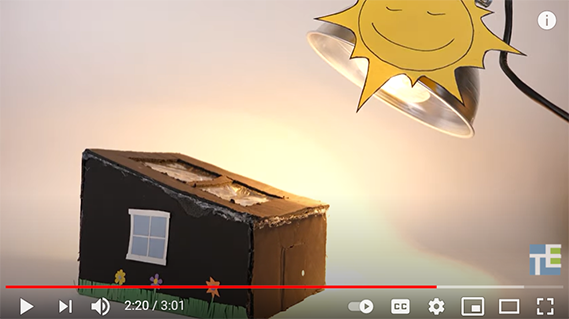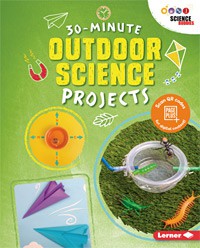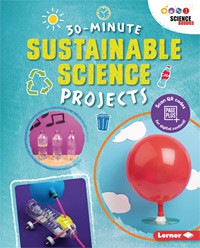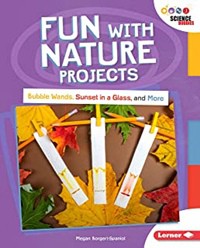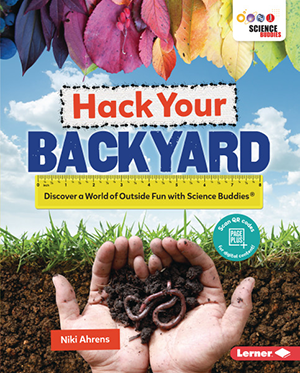Earth Day Science Projects and Activities
Use these free science projects and STEM lessons and activities to celebrate Earth Day and explore related environmental science aimed at using STEM to increase sustainability, protect the Earth, and solve challenges we face for the future.
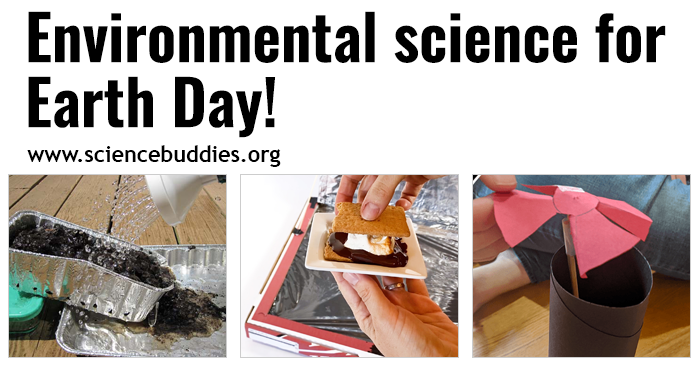
Since its start in 1970, Earth Day has become a global day of activism and learning about environmental topics related to protection of the Earth, its natural resources, and species. Climate change, global warming, deforestation, air pollution, water pollution, and loss of biodiversity are just a few of the many environmental issues that threaten the health of our planet. Learning about the science behind these issues is a first step to creating strategies and solutions for conserving energy and natural resources, reusing and recycling materials, protecting habitats and ecosystems, developing safer chemical processes, and slowing global warming.
The free science projects and STEM lessons and activities below offer classes and families a variety of hands-on learning opportunities related to environmental science and Earth Day. In these activities, students can explore the use of STEM to help find and create solutions for global problems related to energy, recycling, sustainability, deforestation, clean water, climate, soil erosion, fossil fuels, and more.
Hands-on Science and Engineering Activities for Earth Day
The 20+ free science and engineering projects and STEM lessons and activities below have been grouped thematically to highlight environmental science challenges and potential STEM-based solutions:
- Energy
- Ecological Footprint
- Water
- Other Challenges and Threats to Habitats and Ecosystems
- Green Chemistry
- STEM Solutions
A word bank of vocabulary words is included at the bottom of this post.
Solutions for Sustainable Energy, Alternative Energy Solutions, and the Conservation of Energy
1. Rooftop Gardens
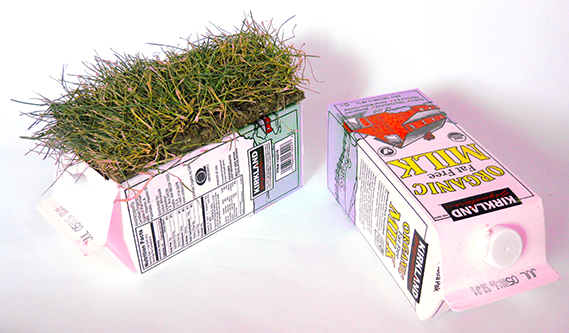
In addition to being beautiful, rooftop gardens (or a living roof) can be a functional and environmentally-friendly addition to a building. Rooftop gardens create new spaces for growing plants and food, and because of photosynthesis, rooftop gardens also remove carbon dioxide from the air and release fresh oxygen we can breathe. Can rooftop gardens also help lower energy bills? In the Sweltering Science: Are Rooftop Gardens a Cool Idea? activity, students investigate to see how effectively rooftop gardens can help control temperature in a building. Do rooftop gardens keep the buildings they sit on cooler? In cities, can these green spaces help minimize the urban heat island effect? (Note: Students intrigued by this environmental engineering solution can experiment further with the Rooftop Gardens: Are They a Cool Idea? science project.)
2. Pizza Box Solar Oven
In the Build a Pizza Box Solar Oven activity, students use a recycled cardboard box, like a pizza box, and build a simple solar oven. Can you take advantage of the Sun's heat to cook?
3. Solar Updraft Tower
In the Build a Solar Updraft Tower activity, students build solar updraft towers from construction paper and use a heat lamp to see how hot air can be funneled up the tower. Could the force of rising air from a solar updraft tower turn turbines, which could then generate electricity?
Be inspired!: See how this family did this activity at home.
4. Wind Turbine
Use the Make the Wind Work for You! project to make a small model wind turbine to explore how wind can be used to generate energy. Experiment to find out which rotor (blade) design produces the most energy.
5. What Color is Your House?
 Image: Wikimedia Commons (Bjørn Giesenbauer, CC BY-SA 2.0)
Image: Wikimedia Commons (Bjørn Giesenbauer, CC BY-SA 2.0)Have you ever been told that you'll be cooler on a hot day if you wear a light-colored t-shirt rather than a dark one? Does the same reasoning apply to the color a house is painted on the outside? The color a house is painted is often based on personal preference or neighborhood rules, but the color of a house may contribute to how much energy it uses to keep a house cool or warm. In the Can the Color of Your House Reduce Your Energy Footprint? activity, students experiment to see how temperature differs in houses covered in different colors of construction paper. (Note: Students who want to learn more can experiment further with this environmental engineering project.)
6. Passive Solar Heating
Can passive solar heating help reduce energy needs and keep houses warm enough without electricity or gas? In the Zero-Energy Housing lesson, students build model houses and explore how design choices, like window placement, insulation, paint colors, and the orientation of the house, play a role in how effective passive solar heating can be. (Note: This lesson is NGSS-aligned for grades 9-12, but educators may still adapt the lesson for use with other grades.)
Understanding Your Ecological Footprint
7. Make a Local Trash Map
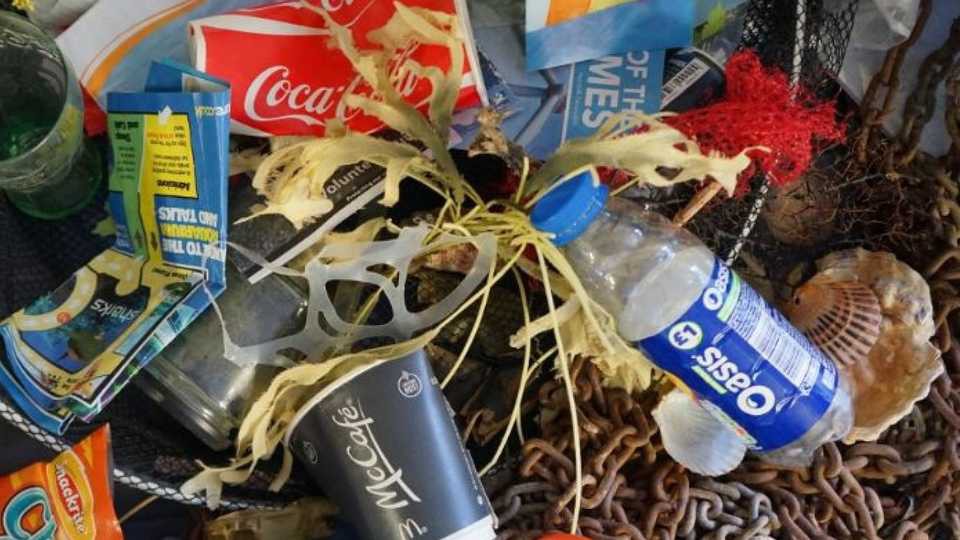
In the Rapid Trash Assessment lesson, students survey a local area to record the types of trash they find. Investigating to see the correlation between the shape of the Earth's surface and where pollution accumulates, students reference a topographical map of the area and use paper and markers to create a 3-dimensional model of the trash and litter they find.
8. Food Waste Audit
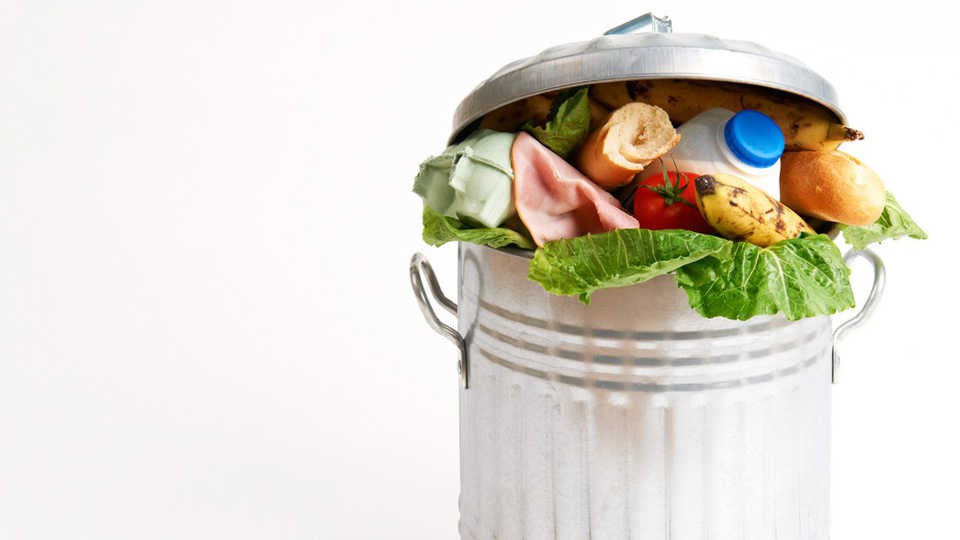
"Fresh Food In Garbage Can to Illustrate Waste" by SpeedKingz/Shutterstock.com
Food waste reduces how effectively available food supply is used around the world. In the Food Waste Audit lesson, students track and monitor their own food waste and then analyze patterns of food waste and strategize ways to reduce food waste.
9. Small Changes Add Up! Your Plan, Your Planet
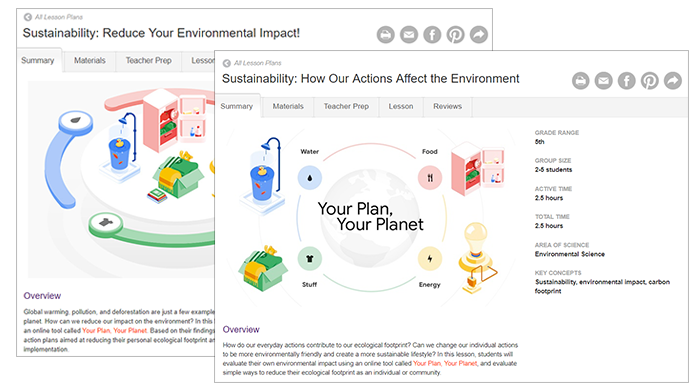
Your Plan, Your Planet is a free, interactive, online tool created by Google in partnership with the California Academy of Sciences and the Ellen MacArthur Foundation. With a series of interactive, game-like activities, Your Plan, Your Planet helps students learn more about sustainability and the kinds of changes they can make at the individual and family level to help ensure a healthy planet today and tomorrow. The following lessons can help you do guided exploration using the online tool:
- Sustainability: How Our Actions Affect the Environment (grade 5)
- Sustainability: Reduce Your Environmental Impact! (grades 6-8)
Note: These lessons are NGSS-aligned for elementary and middle school educators, but both lessons can be adapted for use with students in other grades or by families at home.
For more information about using Your Plan, Your Planet at home or in the classroom, see: Your Plan, Your Planet for Earth Day.
Be inspired! See this teacher's story about exploring sustainability with students.
Solutions for Clean and Available Water
10. Harvesting Water from Fog
Ensuring access to a water supply is a global concern. In the How to Harvest Water from Fog activity, students experiment with a creative approach to harvesting water from the air.
11. Removing Particles from Water
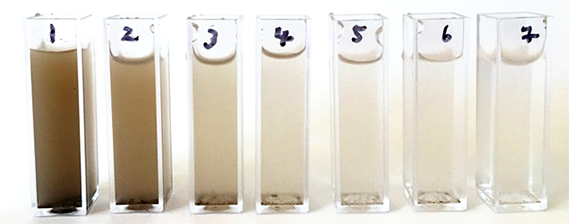
Even when water is available, it is important to make sure that water is clean and safe to use. In the Drinking Water Cleanup activity, students learn about the challenge of cleaning water that is collected from surface sources (like lakes and rivers) or underground sources. This activity helps students explore one of the first steps of water treatment, which involves removing any solid, floating particles and debris (or total suspended solids (TSS)) using processes of coagulation and flocculation. (Note: Students interested in environmental engineering and water processing can explore further with the From Turbid to Clear: How Flocculation Cleans Up Drinking Water project and build and test a turbidity meter.)
12. Filtering Water
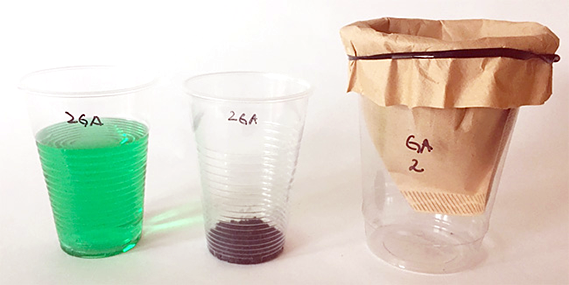
Cleaning water may also involve filtering water to remove smaller particles and chemicals. There are many approaches to water filtering. In the Time to Spring Clean…Your Water! activity, students investigate the challenge of filtering water and experiment with several approaches using household materials. Capable Carbon Filters is a related activity that focuses specifically on carbon filters. (Note: Students interested in the science of filtering water for drinking can explore further by experimenting with column filters in the From Contaminated to Clean: How Filtering Can Clean Water project and activated carbon filters in the Which Filtration Material Leads to the Best Drinking Water? project.)
13. Disinfecting Water
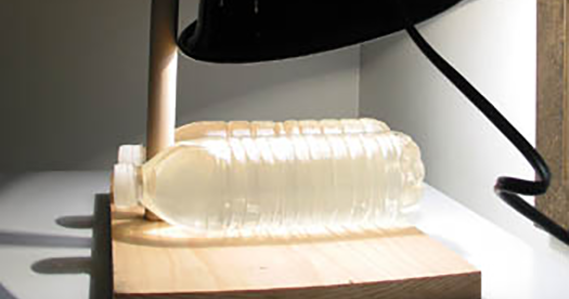
Filtering water isn't the same as disinfecting water. Water can be cleaned or filtered and may look clear to the naked eye, but the water may still contain dangerous pathogens and be unsafe to drink. In the Learn How to Disinfect Contaminated Water project, students experiment to see how UV light can be used to disinfect water. Solar disinfection (SODIS) is a solution that uses sunlight and plastic polyethylene terephthalate (PET) bottles.
Understanding Environmental Challenges and Threats to Habitats and Ecosystems
14. Rising Sea Levels
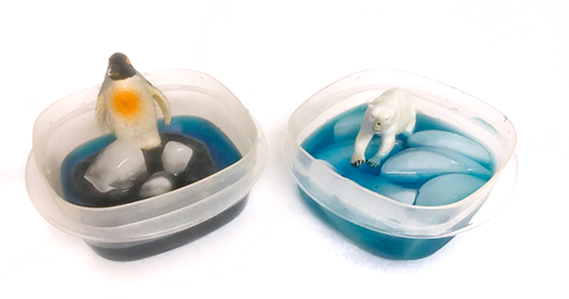
As temperatures increase with global warming, what will happen to the polar ice caps? If they melt, what does this mean for sea levels? In the How Do Melting Polar Ice Caps Affect Sea Levels? activity, students model the Polar and Arctic ice caps to see what happens to the water they contain if they melt. What is the difference in the formation and location of the ice at the North and South Poles?
Note: The Climate Change and Sea Level Rise lesson provides a related lesson that is NGSS-aligned for grades 5-8. In this lesson, students create and use a model to investigate what will happen to sea levels because of global warming.
15. Using Plants to Stop Soil Erosion
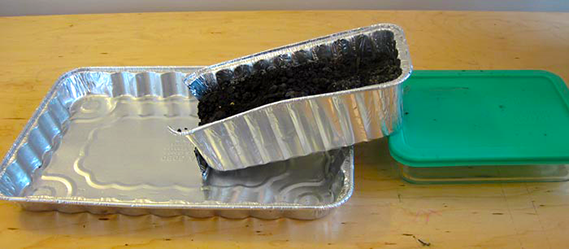
Helping prevent soil runoff is important to reduce erosion and the loss of nutrient rich soils needed for agriculture. Preventing soil runoff is also necessary to reduce the risk of contaminating waterways with fertilizers and pesticides. In the Explore Soil Erosion and See What a Plant Can Do activity, students experiment to see how plants can be used to create barriers that help prevent and reduce soil erosion. (Note: Students can explore related environmental engineering science with the Can Plants Stop Soil Erosion? and Dust Busters: How No-Plow Farmers Try to Save Our Soil projects.)
16. Cleaning Up Oil Spills
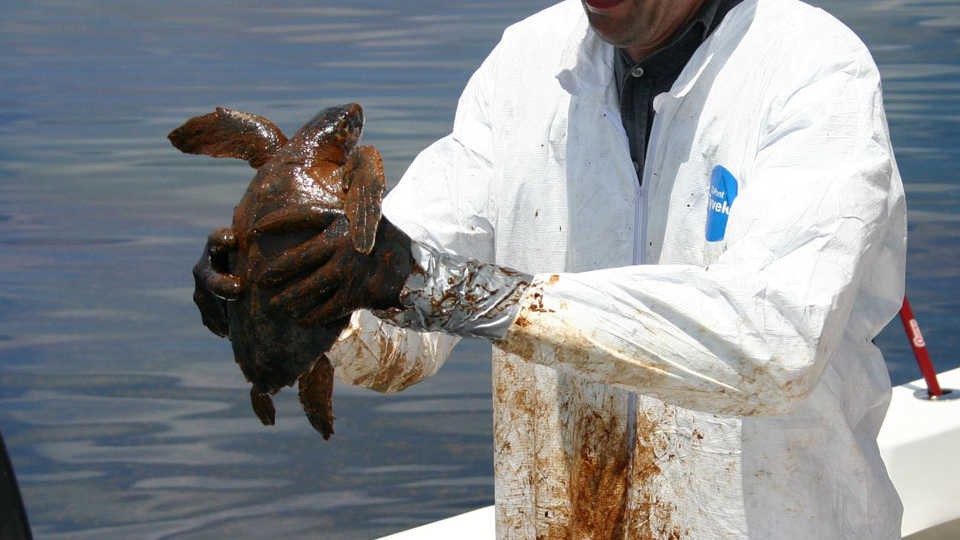
"Oiled Kemps Ridley Sea Turtle" © 2013 NOAA
When an oil spill happens in the ocean, it can threaten marine habitats and ecosystems. While the danger extends throughout the marine layer, students may have heard stories of penguins or sea turtles endangered by oil spills. Unfortunately, oil spills can be difficult to clean up. But why? In the Sorbent Science: Cleaning Up Oil Spills activity, students learn about sorbents, materials that are good at absorbing liquids, and test household materials to see how well they absorb vegetable oil. What sorbents are especially effective for cleaning up oil spills and why? (Note: For educators, the Slippery Shores: Oil Spill Clean-Up lesson contains a similar hands-on STEM exploration and is NGSS-aligned for grades 4-7.)
17. Fossil Fuel Mining

© April
Problems associated with the continued search for and use of fossil fuels, like coal, are frequent topics of discussion in environmental science. In the Fossil Fuels: Chocolate Chip Mining lesson, students do an activity with chocolate chip cookies to better understand the risks mining fossil fuels poses to local habitats.
18. Fossil Fuels and the Greenhouse Effect
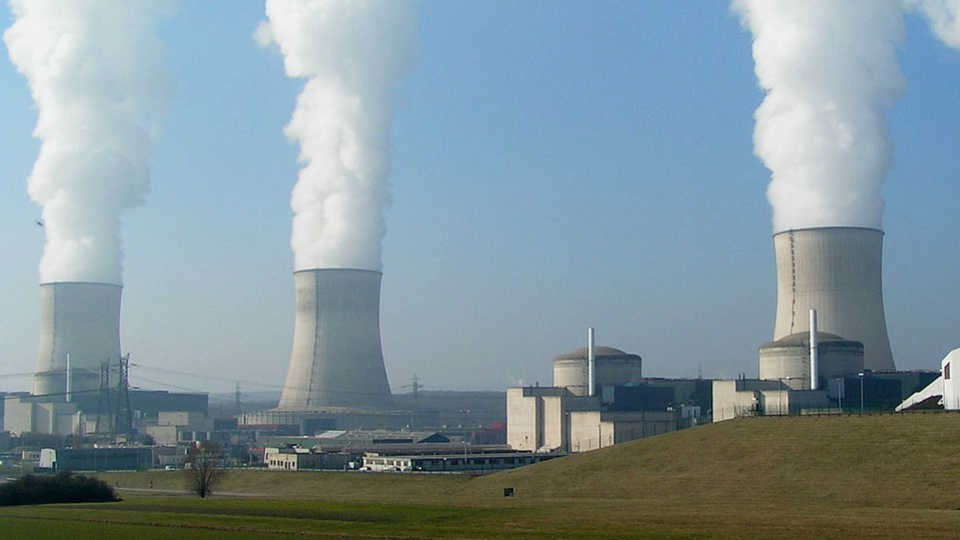
"Nuclear Power Plant Cattenom" © 2005 Stefan Kühn
In the Fossil Fuels: Air Pollution and the Greenhouse Effect lesson, students do hands-on activities to model the effects of burning fossil fuels. Using a beaker experiment, students will see how the burning of fossil fuels releases additional greenhouse gases. With a candle experiment, students will see how fossil fuels contribute to air pollution.
19. Mosquitoes, Disease, and Global Warming

How does global warming affect habitats and ecosystems? In the Could Climate Change Impact the Mosquito-Human Disease Ecosystem? lesson, students use real-world data about mosquito populations across the United States to investigate the relationship between temperature and mosquito populations. (Note: Mosquitoes carry diseases like malaria, West Nile virus, Zika virus, and dengue fever.)
Green Chemistry
Green chemistry aims to reduce the use and creation of dangerous chemicals and byproducts. Based on 12 core principles, green chemistry involves making choices about chemical reactions and reimagining chemical processes in ways that are environmentally aware, produce less hazardous waste, reduce pollution, and result in cleaner air and water and safer products for everyone. Students can experiment with green chemistry in a range of science projects that help underscore traditional chemical processes that pose environmental risks, both in the lab and in manufacturing and development. In these projects, students investigate and test alternatives that align with the principles of green chemistry.
The following projects help students explore chemical processes and green chemistry alternatives related to the development of fabrics and the use of sunscreens.
20. Seaweed Fabric
In the Make Sustainable Fabrics from Seaweed project, students learn about the environmental impact of the textile industry and investigate biofabrics as an alternative. Students make multiple samples of seaweed fabric with different amounts of glycerin in the recipe to see how the properties of the fabric, including its tensile strength, change. (For a similar experiment on fabric alternatives, see Grow Vegan Kombucha Leather.)
21. Are Sunscreens Safe for Water Habitats?
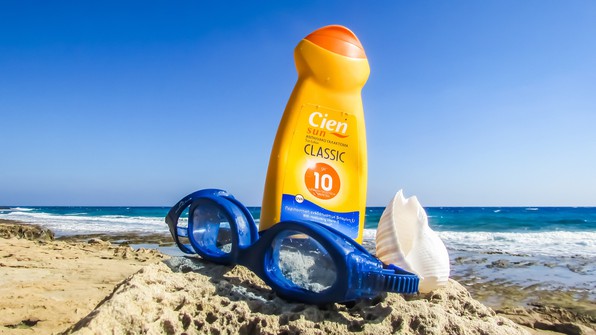
Sunscreens help protect our skin from harmful ultraviolet (UV) rays, but are their ingredients safe for marine habitats? In the How Eco-Friendly is Your Sunscreen? science project, students investigate the ingredients and differences in how physical (or mineral) and chemical sunscreens work. (For a related project, see Testing Sunscreen Effectiveness and Water Solubility.)
For more information about green chemistry and student science, see:
- New Green Chemistry Science Projects—Sustainable Science for Students
- Green Chemistry and the School Science Lab - Safer Chemistry for Today and Tomorrow
- Browse all Green Chemistry resources
Engineering Solutions for Monitoring and Protecting Earth's Ecosystems, Biomes, and Biodiversity
22. Design a Recycling Sorting Machine
Recycling helps preserve resources, reduces pollution, and conserves space available in landfills. But recycling can be a complicated process. In the Build a Recycling-Sorting Machine lesson, students explore the challenge of separating materials in single-stream recycling operations and build their own recycling sorting machines to test different methods for separating materials.
23. Spreading Seeds
In the Design a Seeding Machine to Counteract Deforestation lesson, students learn about deforestation and then use the engineering design process to design a seeding machine to simulate the process of reforestation. This activity challenges students to design and build a seeding machine that can meet specific design requirements, including the need to accurately drop seeds into certain locations on a seeding chart.
24. Rain Garden
Make a model rain garden with the Fight Flooding and Pollution with...a Garden?! project and experiment to see how this type of garden can reduce flooding and help fight pollution.
25. Products from Mushroom Roots
In the Making Everyday Objects Out of Mushrooms: Environmentally Friendly Design activity, students explore biodegradable and sustainable materials and grow their own mycelium to see how mushroom roots can be grown and used as an environmentally-friendly material for everyday products like flower pots and containers. What other items could you make with this material?
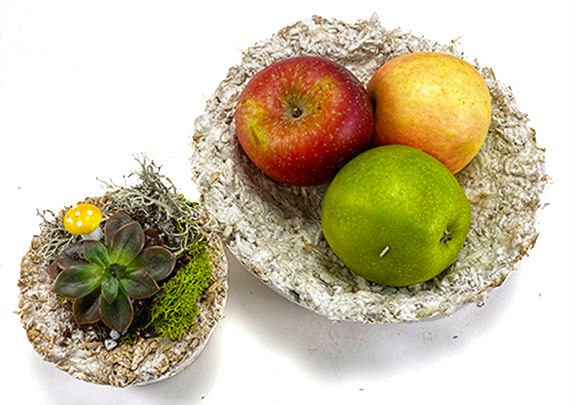
26. Environmental Monitoring and Protecting Nature with Technology
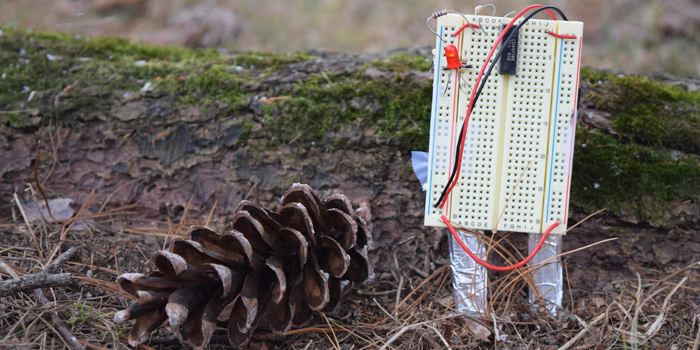
When it comes to effectively monitoring environmental issues, sensor-based technologies may be an important part of the solution. Sensors providing real-time monitoring can help make individuals, agencies, and scientists aware of problems (dangerously high or low levels of something being monitored, for example) and can enable systems of effective and timely response to problems. Sensor-based tools may also be programmed to make changes and take action based on certain conditions.
In the Environmental Monitoring lesson, middle school students think about human impact on the environment and work in groups to develop circuits that can measure specific environmental variables, including the presence or absence of water (or other conductive liquid); the pH, CO2, color, or turbidity of a liquid sample; or the brightness of a light source. As part of their exploration, students build and test a light sensor circuit, a conductivity meter, or a moisture detector.
In the Protecting Nature with Technology lesson, high school students use sensor technology to quantify human impact on the environment and brainstorm ways to use this information to protect the environment and reduce human impact. Possible areas of exploration include light pollution/air quality, water quality, electrical conductivity, and water levels.
Related Resource for Teaching About and Exploring Environmental Science
- Teach About Biodiversity with Free STEM Lessons & Activities
- UN Sustainable Development Goals (SDGs) Science Projects
- Encouraging Students to Learn Basic Coding for a Science Fair Project—Broadcom Coding with Commitment®
Earth Day Vocabulary
The following word bank contains words that may be covered when teaching about environmental science and Earth Day using the lessons and activities in this resource.
- Alternate energy
- Biodiversity
- Carbon footprint
- Climate change
- Coagulation
- Conservation
- Deforestation
- Drinking water treatment plant
- Ecological footprint
- Energy conservation
- Environmental science
- Flocculation
- Fossil fuels
- Habitat
- Living roof
- Non-renewable energy (or resource)
- Recycle
- Reforestation
- Renewable energy (or resource)
- Rooftop garden
- Solar disinfection (SODIS)
- Solar power
- Sustainability
- Total suspended solids (TSS)
- Urban heat island effect
Books for Your Shelves
If you and your students are interested in biodiversity, Earth Day, and environmental science, the following Science Buddies books may be a good addition to your classroom or home library shelves!
Thematic Collections
Collections like this help educators find themed activities in a specific subject area or discover activities and lessons that meet a curriculum need. We hope these collections make it convenient for teachers to browse related lessons and activities. For other collections, see the Teaching Science Units and Thematic Collections lists. We encourage you to browse the complete STEM Activities for Kids and Lesson Plans areas, too. Filters are available to help you narrow your search.
Categories:
You Might Also Enjoy These Related Posts:
- 25+ Earth Day Science Experiments and Activities
- 6 Picks for St. Patrick's Day STEM
- Mario Day STEM — Bring Mario World to Life with Hands-on Science and Engineering Activities!
- 12 Valentine's Day STEM Activities
- STEM Calendar for Educators: Month by Month STEM Projects
- Make Some New Year's Noise with Science Projects!
- Holiday STEM Projects to Make and Give
- Gingerbread STEM!




